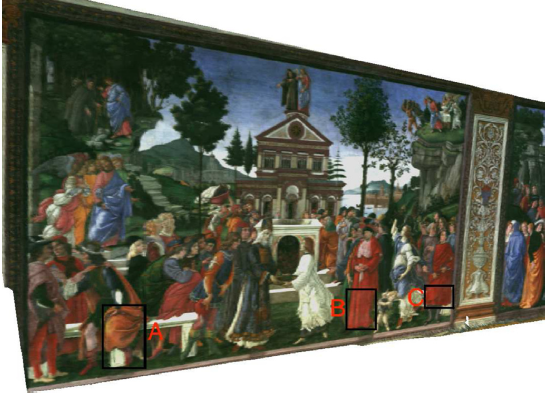3D scanning Part B: Museums related applications

The specific field presents numerous opportunities for the application and utilization of different 3D scanning approaches. Museums, historical sites and artifacts cover a wide range of materials used as described in Table 1. Advantages and applications of using 3D scanning technologies in the art, history and architecture fields can be summarized in Table 2.
Table 1: Materials involved in 3D scanning in various sites and museums
| Site/ Museum/ Artefact type | Materials involved |
| Pre Historic sites |
Marble, stone, iron, brass, copper, bones, teeth |
| Ancient cities and buildings |
Marble, Stone, Iron, brass, gold, silver, ceramics, brass, copper, bones, teeth |
| Museums with paintings |
Wood, organic oils, inorganic pigments, adhesives, paper, papyrus, organic layered materials |
| Natural Museums |
Bones, teeth, brass, wood |
| Museums with small artefacts |
Gold, silver, iron, brass, marble, stone, rock, pigments, wood, crystals |
| Modern museums |
Polymers, pigments, organic colors, metals, crystals |
Table 2: Applications of 3D scanning technologies in art, history and architecture fields [museums and sites]
| Replication of artifacts |
Provides exhibition artefacts for simultaneous exhibitions. Original ones can stay protected in well conditioned areas. Such an action is possible with combination with 3D printing of the replicas |
| Restoration |
Regular 3D scans provide significant information on the status and restoration/ maintenance requirements of various objects, thus minimizing the possibility of significant or irreversible damaging |
| Creation of educational material |
Digitization of objects leads to creation of educational material for millions of students, scientists and tourists leading to enormous scientific and economic growth |
| Acquiring of information |
3D scanning leads to hidden information about objects and buildings |
| Quality assurance |
3D scanning can be applied to the storage rooms and containers to also validate their structural performance at regular intervals |
The choice of the appropriate 3D scanner depends on the following factors:
ü Chemical and physical properties of the materials included in the scanned object
ü Availability of the object for scanning
ü Specific attributes of the object such as shinny coatings
ü Dimension of the object
ü Whether conditions [if outside]
